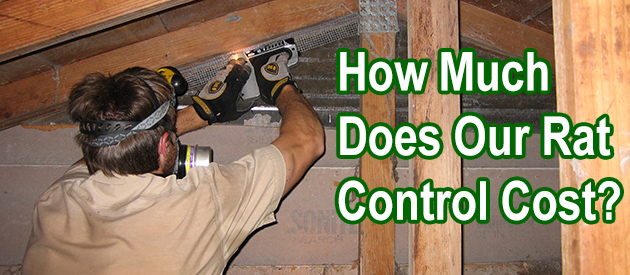Palm Beach County, Boca Raton Rat Control Situation:
Hello: I just read the information from your email. I recently moved into an actually nice home in the Boca Raton area; however the backyard is a woody area and cross from it is the swamp. The owners of the home told me they had a cat so they never saw a rat except what the cat bought in after killing it. When I moved in which was 3 weeks ago, I started to experience rats in the kitchen, saw droppings all over my stove area. I became overwhelmed and my two children (girls) are now petrified. The owner reluctantly paid for an exterminator because they swore they never had a problem. When the exterminator came out they did a walk through. In the attic rat droppings everywhere, in the downstairs closet rat droppings and in the garage. The exterminator sealed up two openings from the attic, and I was told a tree need to cut down because that was how they were getting in, but in the closet downstairs they seem to have inhabit that area. The exterminator wanted me to remove the poison that was put down and they set traps in all 3 areas mentioned. Do you think this will rid the problem or do I need to relocate?
Hi David - I'm in Boca Raton FL and you don't have anyone here!!! I've had mice in my attic since we built our house - 10 yrs ago. I've snap trapped probably over 100 over the years, and again, now that its getting cold here, we hear the scratching at night. I've also used poison blocks that I scatter throughout the attic. I find them scrivelled up sometimes, but with blown in insulation it is hard to find their paths etc. I've got a stone veneer which results in lots of gaps where the top of the wall meets the metal soffit, so I'm wondering how to proceed on sealing that up? Any help you can suggest would be much appreciated. Thanks Bob
Boca Raton Rat Control Tip of The Week
What Equipment Do I Need To Trap A Rat?
Trapping a rat is not as difficult as it seems, provided you have the right kind of equipment. Rats are a highly intelligent household pest with prior knowledge of your unyielding intentions to either get them killed or captured. As a result of this, they will try as much as possible to run for their lives whenever they get the chance to.
For you to outsmart them and make your plans to trap them successfully, you need good quality traps set up at the spot the rats in your house pass through the most and the right process of setting these traps.
Have you decided to trap the rats in your home and you are looking for the equipment to use and the right way to go about this? The first thing you have to do to achieve your objective is to discover the exact routes of the rats in your house. These are the places you will be setting your traps once you are ready to capture them.
After that, the next thing you have to put in place is the right kind for bait. A good bait should help attract rats and not any other pest or animal in your home. If you just chose a random food substance as bait, you might end up trapping the pets in your home instead of the target pest.
After putting all of that in place, the most important piece of equipment you need to trap a rat is a good quality trap. Your choice of trap depends on whether you want to kill the rats with the trap or just trap them and later release them far away from your home.
If you choose to kill them directly with the trap, a lethal rat trap will be most appropriate. The only issue with the use of this trap is that you will have to get multiple traps and set them at different locations because this kind of trap can't trap more than one rat at a time.
On the other hand, if you choose to trap the rats and release them afterward, a one-way entry door trap will also be most appropriate. Also, while setting up either of these traps, you need to protect yourself at all times from the bacteria spread by the rats by wearing a pair of gloves and a protective mask.


